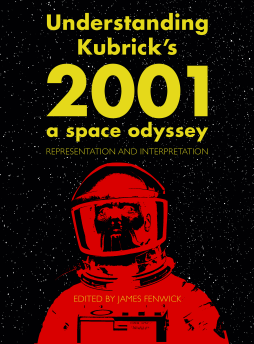
Additional Information
Book Details
Abstract
This edited volume seeks to bring to light the impact of the ‘new’ Kubrick studies upon the ‘old’ Kubrick studies and collate together original insights, and textual and interpretative analyses of 2001: A Space Odyssey. By revising the formalist approaches in Kubrick Studies and conflating it with new empirical approaches, we can arrive at a broader understanding of the means and ways in which Kubrick’s methods as a director were developed to create a unique aesthetic creation and a film that changed cinematic language radically. Approaching the 50th anniversary of its release, 2001’s reputation is cemented as one of the greatest and most influential films ever made, regularly appearing in polls of the most important movies. And the film is still years ahead in its design, vision and philosophical structure. Contributions come largely from emerging scholarly voices within Film Studies, bringing new and innovative approaches to a film they share a common passion for.
Table of Contents
| Section Title | Page | Action | Price |
|---|---|---|---|
| Cover | Cover | ||
| Half Title | i | ||
| Title | iii | ||
| Copyright | iv | ||
| Contents | vii | ||
| List of Illustrations | ix | ||
| Notes on Contributors | xi | ||
| Acknowledgements | xv | ||
| Notes on the Text | xvii | ||
| Introduction: Forging new perspectives | 1 | ||
| Part One: Narrative and Adaptation | 13 | ||
| Chapter One: ‘God, it’ll be hard topping the H-bomb’: Kubrick’s search for a new obsession in the path from Dr. Strangelove to 2001: A Space Odyssey | 17 | ||
| Chapter Two: 2001: A Space Odyssey: A transcendental trans-locution | 33 | ||
| Chapter Three: Four-colour Kubrick: Jack Kirby’s 2001: A Space Odyssey as adaptation and extension | 45 | ||
| Part Two: Performance | 59 | ||
| Chapter Four: Performing the man-ape in ‘The Dawn of Man’: Daniel Richter and The American Mime Theatre | 63 | ||
| Chapter Five: Life functions terminated: Actors’ performances and the aesthetics of distanced subjectivity in 2001: A Space Odyssey | 79 | ||
| Part Three: Technology | 95 | ||
| Chapter Six: From technical to cinematographic objects in 2001: A Space Odyssey | 99 | ||
| Chapter Seven: Homo machinus: Kubrick’s two HALs and the evolution of monstrous machines | 115 | ||
| Part Four: Masculinity and the Astronaut | 129 | ||
| Chapter Eight: Clarke and Kubrick’s 2001: A queer odyssey | 133 | ||
| Chapter Nine: ‘But as to whether or not he has feelings is something I don’t think anyone can truthfully answer’: The image of the astronaut in 2001: A Space Odyssey and its lasting impact | 151 | ||
| Part Five: Visual Spectacle | 163 | ||
| Chapter Ten: Negative/Positive: Metaphors of photography in 2001: A Space Odyssey | 167 | ||
| Chapter Eleven: The sublime in 2001: A Space Odyssey | 181 | ||
| Part Six: Production | 197 | ||
| Chapter Twelve: 2001: A comprehensive chronology | 201 | ||
| Appendix One: Stanley Kubrick filmography | 225 | ||
| Appendix Two: 2001: A Space Odyssey film credits | 227 | ||
| Notes | 229 | ||
| Bibliography | 239 | ||
| Index | 261 | ||
| Back Cover | Back Cover |
